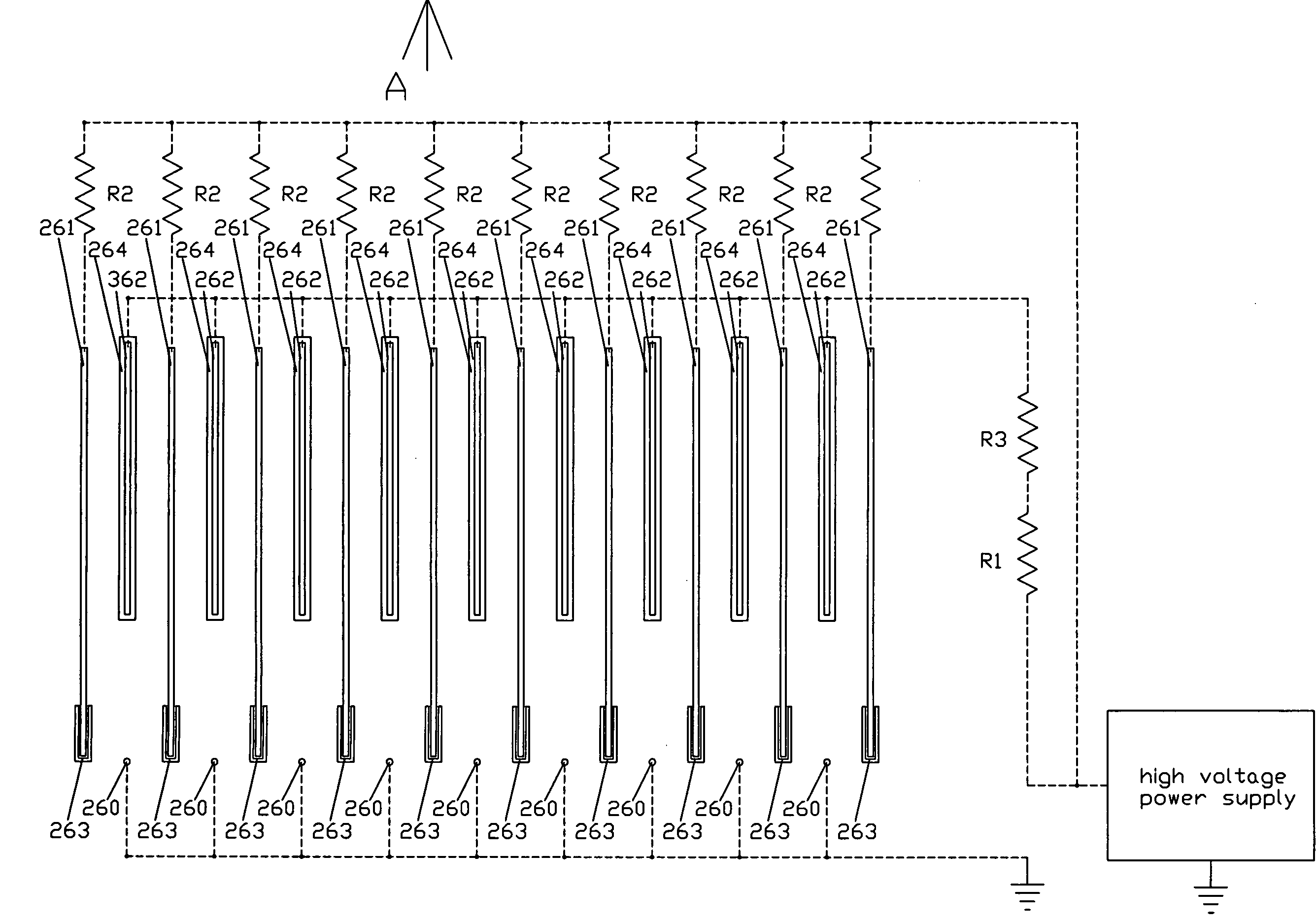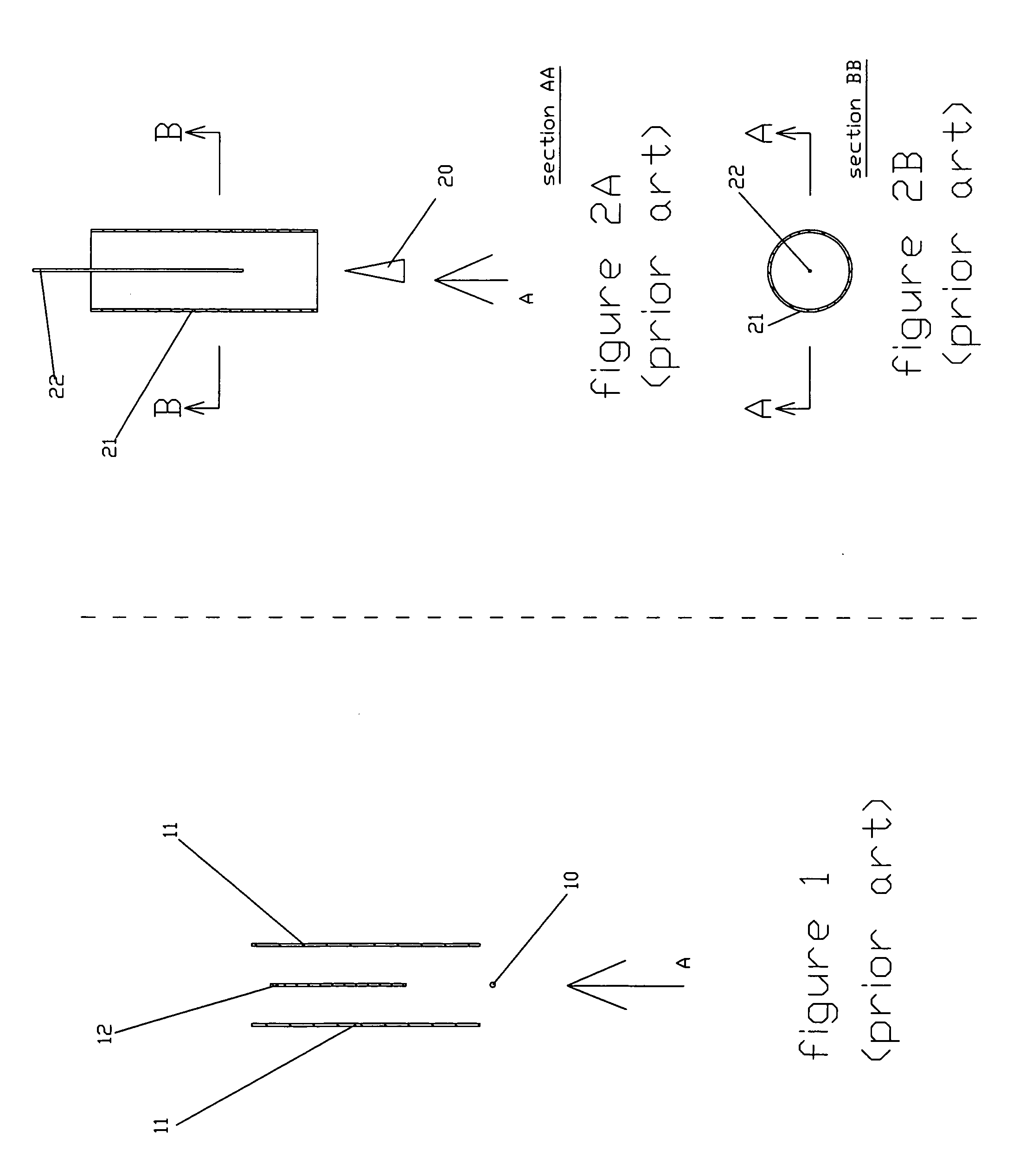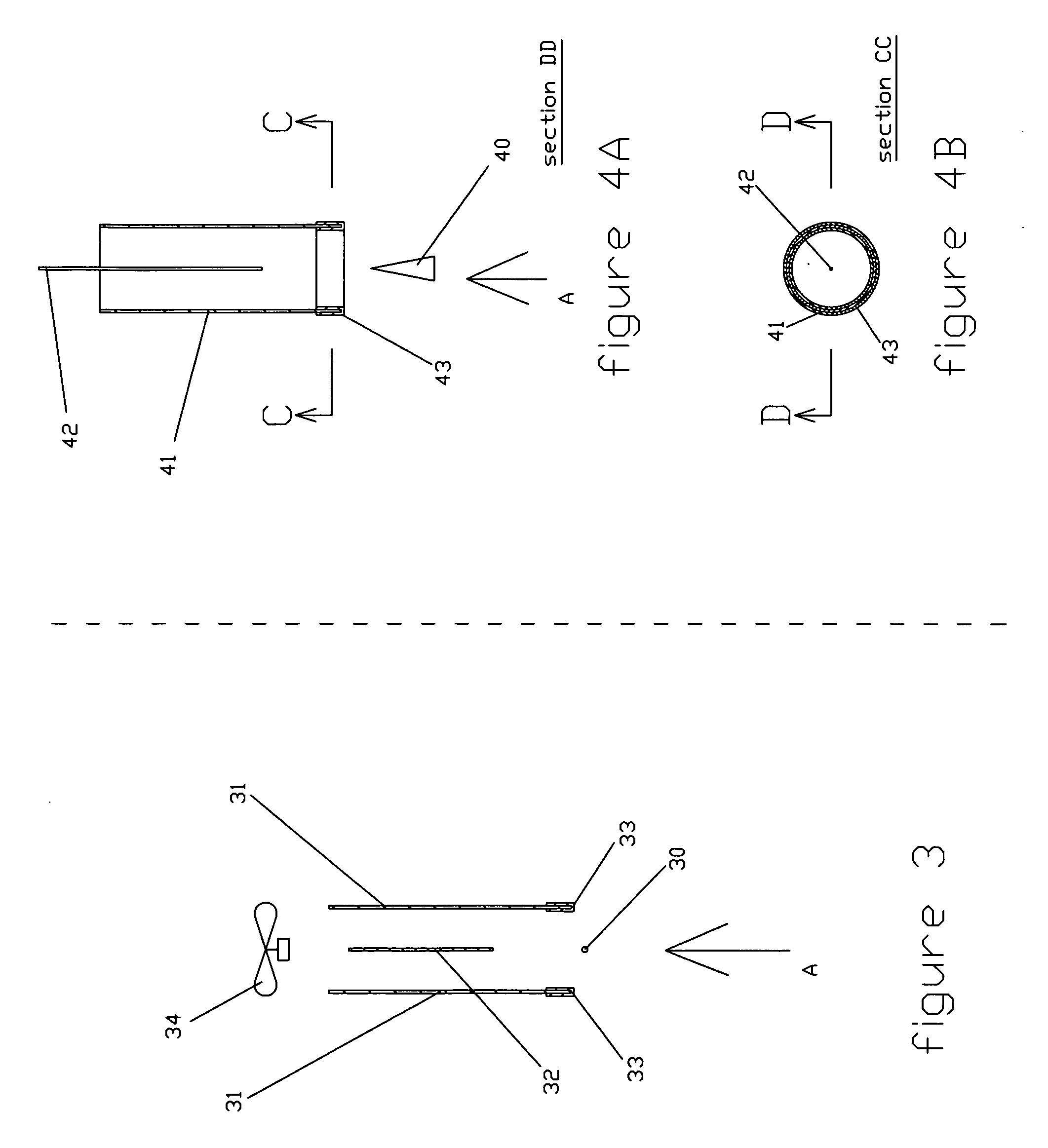Devices for removing particles from a gas comprising an electrostatic precipitator
a technology of electrostatic precipitator and gas, which is applied in the direction of electrostatic separation, chemistry apparatus and processes, human health protection, etc., can solve the problem of not uniform current density at these different portions of the receptor electrode, and achieve the effect of enhancing the uniformity of current density
- Summary
- Abstract
- Description
- Claims
- Application Information
AI Technical Summary
Benefits of technology
Problems solved by technology
Method used
Image
Examples
example
[0120]A comparison test was performed using air cleaners arranged in the configurations shown in FIG. 25 and FIG. 26. In the FIG. 25 configuration, the receptor / collector electrode plates 251 were 450 mm long, 100 mm wide and 0.5 mm thick aluminum sheet. These receptor / collector electrodes were spaced 14 mm apart in a parallel manner. The emitter wires 250 were a commercially available 0.12 mm diameter tungsten wire. Ten receptor / collector plates 251, nine emitter wires and nine driver electrodes 252 insulated with insulator 254 were arranged as shown in FIG. 25. A potential difference of about 5 Kv was applied between the emitter wire and the receptor / collector plates to produce a corona current of about 350 microampere without arcing. The CADR (clean air delivery rate) for dust as defined in ANSI / AHAM AC-1-2006 and the ozone concentration according to UL Ozone Standard 867 were measured. This arrangement had a CADR for dust of around 160 and generated 7 parts per billion ozone.
[01...
PUM
 Login to View More
Login to View More Abstract
Description
Claims
Application Information
 Login to View More
Login to View More - R&D
- Intellectual Property
- Life Sciences
- Materials
- Tech Scout
- Unparalleled Data Quality
- Higher Quality Content
- 60% Fewer Hallucinations
Browse by: Latest US Patents, China's latest patents, Technical Efficacy Thesaurus, Application Domain, Technology Topic, Popular Technical Reports.
© 2025 PatSnap. All rights reserved.Legal|Privacy policy|Modern Slavery Act Transparency Statement|Sitemap|About US| Contact US: help@patsnap.com



